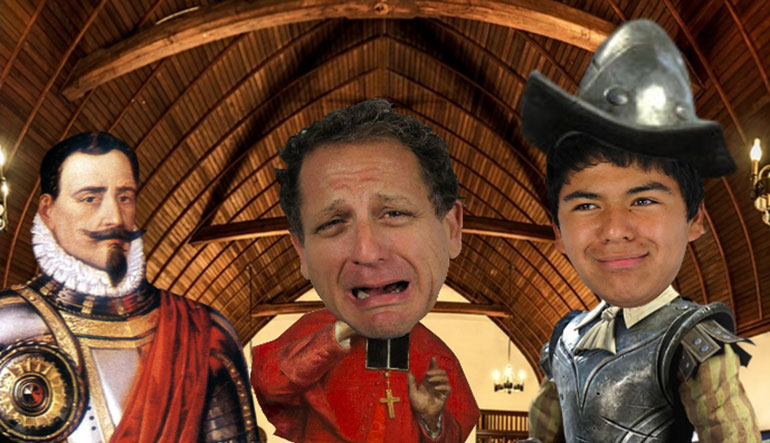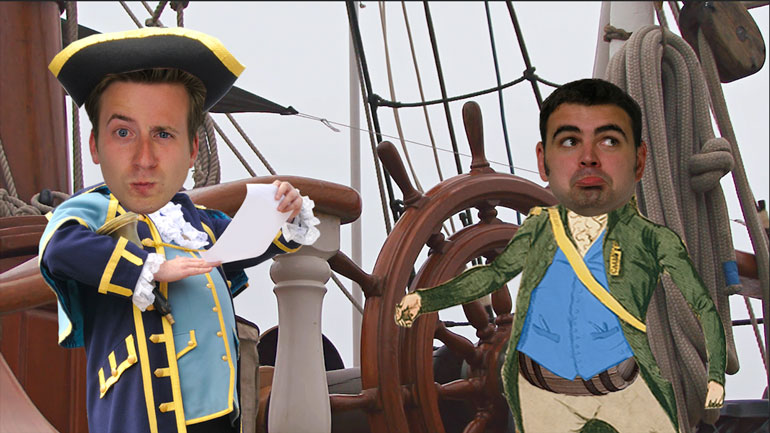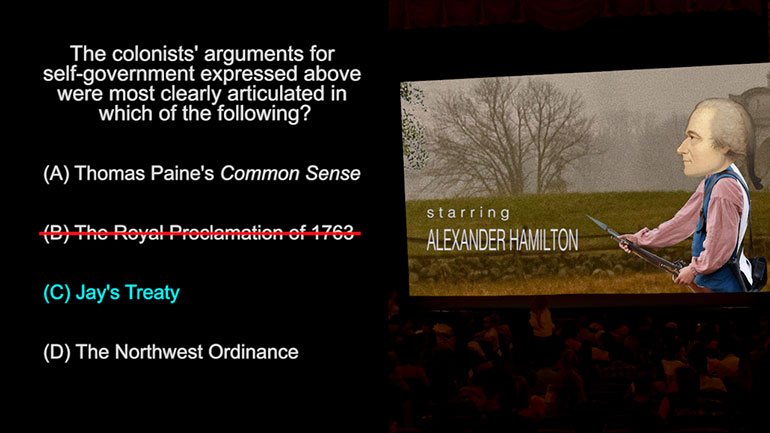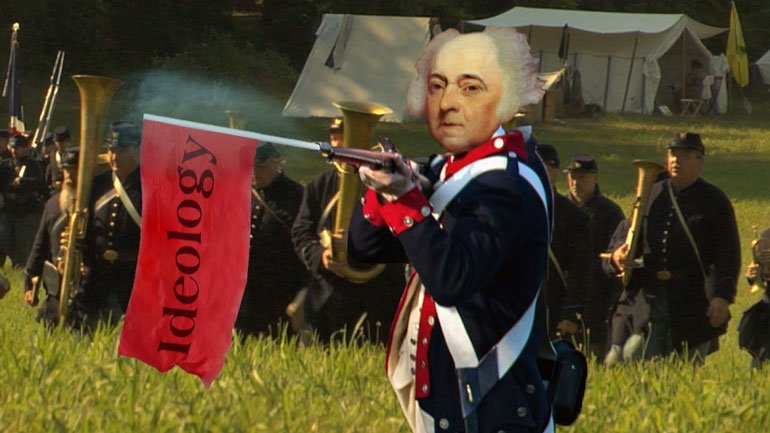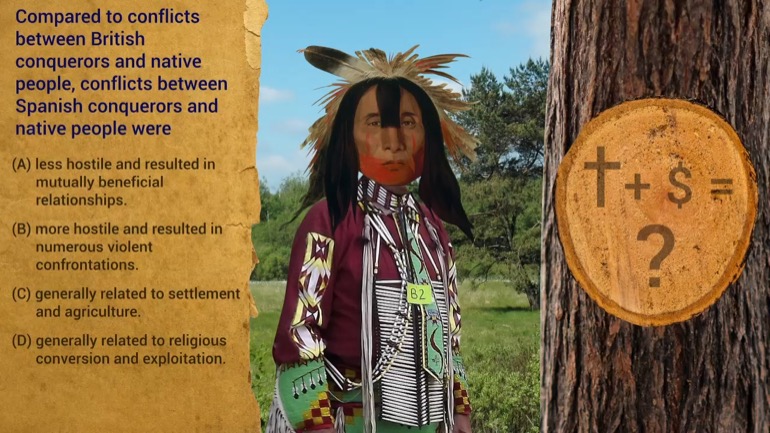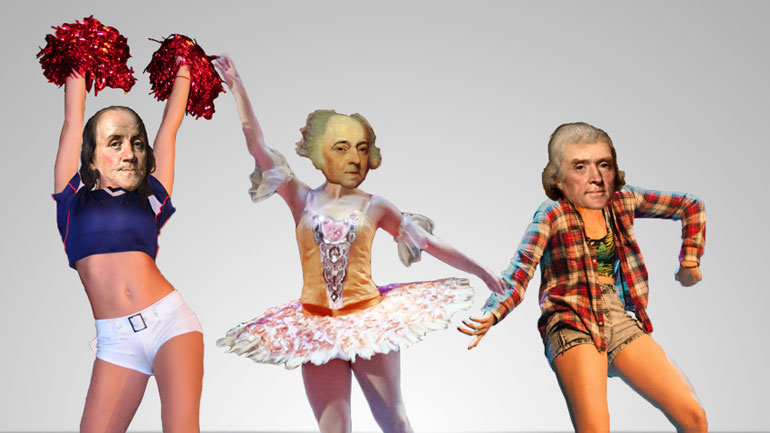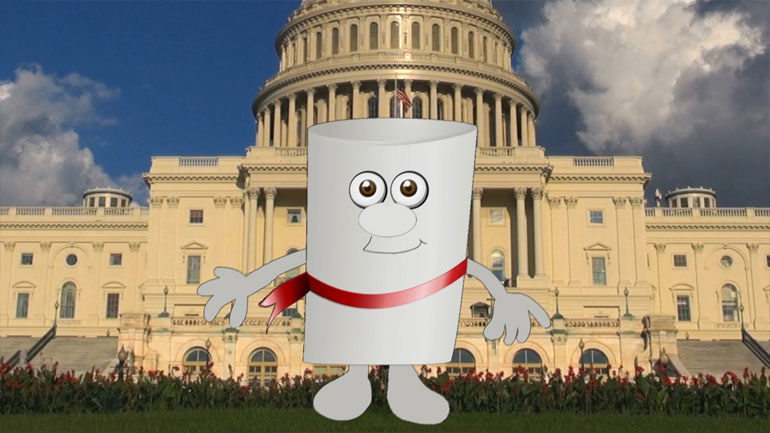ShmoopTube
Where Monty Python meets your 10th grade teacher.
Search Thousands of Shmoop Videos
AP U.S. History Videos 273 videos
Today's lesson: The Civil War. A war may be civil, but it's never pretty. Well, aside from the Pretty Pink Fairy Wars of '93...but no one seems to...
AP U.S. History Period 1: 1491-1607 Drill 3, Problem 2. The cultivation of maize, depicted in the image, also played a significant role in which of...
AP U.S. History Exam 2.2. Prior to European contact, why was it necessary for the societies of the "Plains" region on the map to live a mobile life...
AP U.S. History Exam 1.17 175 Views
Share It!
Description:
AP U.S. History Exam 1.17. How did the development described in the excerpt contribute to the continued slave trade in the United States?
Transcript
- 00:00
[ musical flourish ]
- 00:03
And here's your Shmoop du jour, brought to you by factories,
- 00:06
workplaces with a firm commitment
- 00:09
to the truth.
- 00:10
Mm-hmm.
Full Transcript
- 00:12
All right, first up, the excerpt.
- 00:14
[ mumbles ]
- 00:18
[ mumbling continues ]
- 00:22
All right. Oh, Loom and Spindle Magazine.
- 00:24
That's an awesome mag. Yeah. Yeah.
- 00:25
All right. That was a real rag in those days.
- 00:27
All right, and now the question:
- 00:29
How did the development described in the excerpt
- 00:31
contribute to the continued slave trade in the United States?
- 00:35
And here are your potential answers.
- 00:36
[ mumbles ]
- 00:41
All right.
- 00:42
Well, after the Industrial Revolution reached the United States,
- 00:45
textile mills began to pop up across the country,
- 00:47
particularly in the slave-free states of New England.
- 00:51
Let's see what kind of an impact these new-fangled machines
- 00:53
had on the slave trade down south.
- 00:55
Did the introduction of textile machinery
- 00:57
affect the slave trade because A -
- 00:59
plantation owners earned additional money by
- 01:02
buying mills in the North?
- 01:04
Well, plantation owners had plenty of cash coming in
- 01:06
from their agricultural business,
- 01:08
so there was very little need to diversify.
- 01:10
So that's a no-go on A.
- 01:12
Did this new textile machinery impact the slave economy because
- 01:16
B - mill owners allowed their buildings
- 01:18
to be used as sites for slave auctions?
- 01:21
Huh.
- 01:21
Well, many of these mills were located in the North,
- 01:24
so their owners claimed very publicly to be against slavery.
- 01:28
So that knocks out B and C.
- 01:29
Which means that the development of new textile technologies
- 01:32
contributed to the continued slave trade because D -
- 01:35
mills relied on raw materials produced through slave labor.
- 01:39
Remember how the mill owners
- 01:40
publicly claimed to be against slavery?
- 01:42
Well, many of their products depended
- 01:44
on the southern cotton industry, which was sustained
- 01:47
by the work of slave labor.
- 01:49
Hypocrisy.com here we come.
- 01:51
Talk about a battle between bleeding hearts and corporate minds.
- 01:55
Good luck with that.
- 01:57
[ gasp ] [ how dare you ]
Related Videos
Ever heard of a "living document"? They eat and breathe just like the rest of us! They even walk around on their own two legs. Okay, fine—maybe t...
If the Puritans had gotten their way, religion would play a much larger role in lawmaking these days. Want to know more? Watch the video for all th...
What happened between the creation of the Articles of Confederation and the ratification of the current U.S. Constitution? This video analyzes the...
The Modernists thought the world had a lot of problems, and they were intent on fixing them—or at least talking about fixing them. Unfortunately,...
This video explains Federalism and the quest for a fair balance between state and national power. It covers the progression and compromises of Fede...















